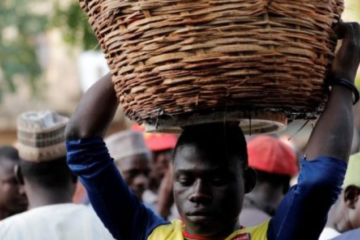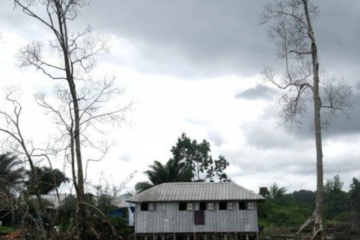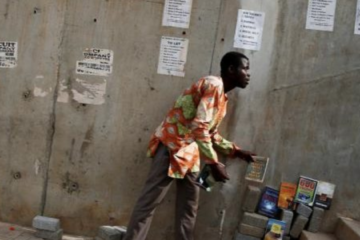Herman Melville, a travel writer of sorts, was not impressed with Lima. In his classic Moby Dick, Melville says of the city:
Nor is it, altogether, the remembrance of her cathedral-toppling earthquakes; nor the stampedoes of her frantic seas: nor the tearlessness of arid skies that never rain; nor the sight of her wide field of leaning spires, wrenched copestones, and crosses all adroop (like canted yards of anchored fleets); and her suburban avenues of house-walls lying over upon each other, as a tossed pack of cards; it is not these things alone which make tearless Lima, the strangest, saddest city thou can’st see. For Lima has taken the white veil; and there is a higher horror in this whiteness of her woe. Old as Pizarro, this whiteness keeps her ruins forever new; admits not the cheerful greenness of complete decay; spreads over her broken ramparts the rigid pallor of an apoplexy that fixes its own distortions.
This assessment seems a bit harsh, but Melville must be forgiven. He was, after all, a manic-depressive. Moreover, he has a point. This place is depressing. La garúa, the almost perpetual haze that hangs over the city, the largely grassless landscape, the absence of color, the unattractive dirt cliffs, and the fact that it almost never rains, thus leaving everything covered in a moist brown film, makes for an unpleasant ambiance. No wonder Peru is one the world’s top cocaine producers. Looking to take a romantic getaway to Latin America? Scratch Lima off your list of potential destinations.
There’s not much to celebrate about Peru. From the early 1980s to 2000, Peru suffered a gruesome civil war was fought between government forces and the Maoist (i.e., communist) terrorist group Shining Path. There were really no good guys here. Tens of thousands were kidnapped, tortured, and murdered indiscriminately. Writing for the New York Times in 2012, William Neuman says:
Peru has seen impressive, although uneven, economic growth in recent years, but many of the inequities that helped set off the guerrilla conflict remain, including crushing poverty in urban slums and villages and marginalization of indigenous populations.
Unfortunately, this remains true in 2017. In March, Shining Path, determined to protect its coca fields, attacked a police convoy. Cocaine is highly lucrative business to Shining Path, and the dense Peruvian jungles offer the terrorist group an effective hiding place. And while their strength and numbers are diminished, such an attack is evidence that they remain a threat to Peruvian stability.
The horrors of a civil war in Peru’s not-so-distant past—horrors committed by a (mostly) defeated enemy as well as the government that continues to exercise power—are an unsettling truth that cannot be easily dismissed as Peru seeks to enhance its global image as an emerging democracy. Like Melville, Zachary and I couldn’t wait to leave.
Peru star rating: 3/10


